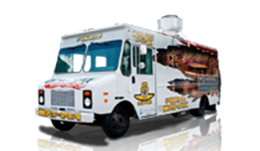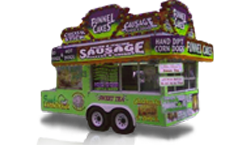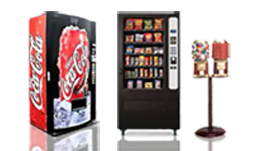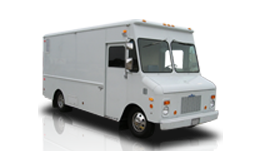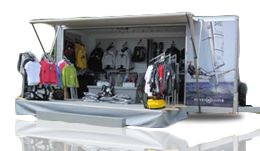Beginner’s Guide: The Basics of Food Truck Sales Tax

Like any other business, a food truck is not exempted to pay local and federal taxes. What’s challenging is that food trucks open up a new world of taxation. You need to get the right sales tax, but it’s not a fun thing. It’s not profitable either. It’s hard to understand how to collect, report, and file taxes from sales. But it pays to know the basics of food truck sales tax.
What is a Sales Tax?
A sales tax is the tax imposed by the government for the sale of goods and services. Conventionally it is collected by a seller on the point of sales and then passed on to the government. Sales tax is a charge to the end-user of goods and services. For example, food truck owners will not pay sales tax for the fresh ingredients they will use on their menu. Their selling permit allows them to resale these ingredients as part of their food offering. So, they’ll charge a sales tax to their customers who are the end-users of the food they sell. This scenario agrees with the general provision of sales tax on most states where only prepared foods are taxable. Sales tax varies per state because they directly go to the state and not to the federal government.
How to Find the Local Sales Tax Rate Per State
Since sales taxes directly go to the local government, they are governed at the level of a state. This means that policies and rules vary per state. This is the challenge among food truck operators. They need to know the following aspects that concern sales tax for every state:
- What products are taxable and non- taxable?
- How much is the chargeable sales tax?
- When do you need to file the sales tax report?
- When is the due date of filing sales tax returns?
TaxJar is a technology solution that helps sellers manage their sales tax. Food truck operators can take advantage of their sales tax map to get helpful info about the four aspects mentioned above. Just click a state, and you’ll be directed to a page full of information about the state’s sales tax. You can also use their sales tax calculator to determine the percentage of the sales tax you need to charge per state.
The Top 5 States with the Highest Sales Tax
46 states are charging statewide sales tax, and 38 states are charging local state tax. Local state taxes are usually higher than statewide sales taxes. Alaska, Delaware, Montana, New Hampshire, and Oregon don’t charge sales tax. It makes shopping cheaper in these five states. The average percentage of combined sales taxes for 2020 is 6.35%. 33 states charge a higher percentage, and 17 states charge a lower percentage than this average rate. Food truck operators have to be aware of the states who charge a higher percentage. It’s because the sales tax can largely affect their profits and sales. Among the top five states with the highest sales tax are:
- Tennessee = 9.53%
- Louisiana = 9.52%
- Arkansas = 9.47%
- Washington = 9.21%
- Alabama = 9.22%
Sales Tax Compliance for Food Trucks
The physical presence of a food truck business in a state subject it to sales tax compliance based on the sales tax nexus. This is the connection between a seller and the state. Food trucks must collect sales tax on the point of sales. For example, if a food truck in Washington sells taxable products, the vendor needs to collect a 9.21% sales tax from their customers. If a food truck in Louisiana sells taxable products, they need to collect a sales tax of 9.52%.
To legally collect sales taxes, the food truck vendor must register to the State Department of Revenue. They can do it online or as a professional to secure the permit for them. The online filing process takes instantly to 10 business days for the permit to be released. While paper registration may take two to four weeks.
After getting a sales tax permit, you can start collecting the sales tax percentage on every sale you made. The receipt should reflect a separate computation for the sales tax charges. Most food truck vendors use software to integrate the sales tax on their POS. Others can do it manually but it may be time-consuming.
The last step is to send sales tax reports and payments to the state. Remember that due dates differ per local government, so you have to be very well aware. Deadlines usually fall on the 20th or 25th of every month. Sales tax reports and payments for some states have a quarterly or yearly deadline. What’s convenient is that most states allow food trucks to do the process online.
Sales Tax Rules of Thumb for Food Truck
When it comes to sales tax, food truck operators should keep in mind three rules of thumb.
First, be aware of the state tax law. You need to know the chargeable sales tax on your food truck location. You must also complete the sales tax report and payment at the designated time. These help you avoid paying large penalties and the risk of losing your business.
Second, don’t go under or over to collect sales taxes from your customer. Customers don’t like being overcharged for sales taxes. It may result in a bad reputation for your food cart. In the same way, you don’t want to shoulder the amount for under-collection of sales taxes. As always, it’s important to be aware of the exact sales tax percentage of a state.
Third, keep yourself updated. After getting a sales tax permit from a local government, you will need to correspond with them consistently. This is to make yourself updated from any changes in their policies. Watch out for any notices on the changes in sales tax rates and deadlines.


